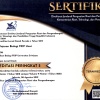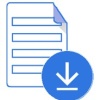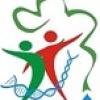Author Guidelines
1. Journal of Biological Learning Journal (JPB) contains critical study articles and research results on Biology and its learning.
2. Articles sent have never been published in other mass media (print or online), typed in the Microsoft Word program, Times New Roman letters, size 12 pts, with double spaces, on one face of A4 paper. The maximum length of the article is 20 pages. All submission processes up to publication are via the Online Journal System (OJS).
3. The name of the author of the article written without an academic title is placed under the title of the article along with the name and address of the institution, home address, telephone / cellphone for Whats App, and e-mail address to facilitate communication. If the author consists of 4 or more people, which is listed below the title is the name of the main author; the names of other authors are listed as footnotes on the first page. In the case of articles written by the team, the editor only deals with the author whose name is first.
4. Art. Written in Indonesian with essay format. Article titles are printed with capital letters. Each part of the article, except the introductory section, is given the title according to its rank by not using numbers / numbers. The letters in the title of each article section are as follows.
RATING 1 (ALL LARGE LETTERS, LEFT LEFT, THICK PRINT)
Rating 2 (Small Uppercase, Left Average, Thickness)
Rating 3 (Small Uppercase, Left Average, Italic Thickness)
5. Systematics of article writing thought: ? title ? author's name (without academic title), name and address of the institution, home address, telephone / cellphone, and e-mail address ? abstract (maximum 100 words) ? key words (most lots of five words) ? introduction (without title) containing background and purpose or scope of writing ? main discussion (can be divided into several sub-sections) ? closing contains conclusions and suggestions ? reference list of at least 70% of the last 10 years issue and only contains referenced sources.
6. Systematics of research articles: ? title ? author's name (without academic title), name and address of the institution, home address, telephone / cellphone, and e-mail address ? abstract contains background, objectives, methods and results (maximum 100 words) ? key words (maximum of five words) ? introduction (without title) containing background, a little literature review, and research objectives ? method ? results ? discussion ? closing contains conclusions and suggestions ? reference list of at least 70% of issue 10 last year and only includes referenced sources.
7. Reference sources as far as possible are in the form of primary sources, such as research reports (including theses, theses, dissertations), or research articles in scientific journals or periodicals. Inclusion of reference sources for direct or indirect quotes using enclosed techniques, for example: (Davis, 2003: 27).
8. The reference list is sorted alphabetically and arranged systematically as the following example.
• Books:
Cooper, J.D. 1993. Literacy: Helping Children Construct Meaning. Boston Toronto: Hougton Miffin Company.
• Book collection of articles (there is an editor):
Letheridge, S. & Cannon, C.R. (Eds.). 1980. Bilingual Education: Teaching English as a Second Language. New York: Praegar.
• Articles in magazines or newspapers:
Suryadarma, S.V.C.1990. Prosesor dan Interface: Komunikasi Data. Info Komputer, IV (4):46--48. Huda, M. 13 November, 1991. Menyiasati Krisis Listrik Musim Kering. Jawa Pos, hlm. 6.
• Posts / news in the newspaper (without the author's name):
Jawa Pos. 22 April, 1995. Wanita Kelas Bawah Lebih Mandiri, hlm. 3.
• Government official documents issued by publishers and without institutions:
Undang-Undang Republik Indonesia Nomor 2 Tahun 1989 tentang Sistem Pendidikan Nasional. 1990. Jakarta: PT Armas Duta Jaya.
• Official document:
Pusat Pembinaan dan Pengembangan Bahasa. 1978. Pedoman Penulisan Laporan Penelitian. Jakarta: Departemen Pendidikan dan Kebudayaan.
Undang-undang Republik Indonesia Nomor 2 tentang Sistem Pendidikaan Nasional.1990. Jakarta: PT Armas Duta Jaya.
• Translation book:
Ary, D., Jacobs, L.C. & Razavieh, A. Tanpa tahun. Pengantar Penelitian Pendidikan. Terjemahan oleh Arief Furchan. 1982. Surabaya: Usaha Nasional.
• Thesis, Thesis, Dissertation, Research ReportGhazali, S. 1999. Kerumitan Kalimat Siswa Sekolah Dasar. Disertasi tidak diterbitkan. Malang: PPs Universitas Malang (UM).
• Papers, seminars, workshops, upgrading:
Suparno. 1998. Pengajaran Bahasa Indonesia di Sekolah. Makalah disajikan dalam Kongres Bahasa Indonesia VII Jakarta, 26--30 Oktober. Jakarta: Depdikbud.
• Internet (articles in online journals):
Kumaidi. 1998. Pengukuran Bekal Awal Belajar dan Pengembangan Tesnya. Jurnal Ilmu Pendidikan, (Online), Jilid 5, No. 4, (http://www.malang.ac.id, diakses 20 Januari 2000.
9. The procedure for presenting citations, references, tables and images follows the provisions in the Guidelines for Writing Scientific Works in the Sriwijaya University FKIP Guidebook, 2013) or directly follows the procedures used in articles that have been published.
10. All manuscripts are reviewed anonymously by a sustainable partner (reviewers) appointed by the editor according to their expertise. The author of the article is given the opportunity to make improvements (revisions) to the script on the basis of recommendations / suggestions from partner bestari or editor. Certainty of loading or rejection of the text will be notified in writing.
11. Inspection and print editing try to be done by the editor and / or by involving the author. Articles that have been printed in print can be canceled by editors if they are found to be problematic.
12. Everything that menyan everything that involves the licensing of quotations or the use of computer software for the manufacture of manuscripts or other matters relating to intellectual property rights carried out by the author of the article, along with the legal consequences that arise, are the responsibility of the author of the article.
13. As a prerequisite for article processing, article contributors must be customers for at least one year. Authors whose articles are published must pay a contribution to the printing costs. In return, the author received 2 copies of the proof of loading and 2 copies. Articles that are not loaded will not be returned, except at the request of the author.
Cooper, J.D. 1993. Literacy: Helping Children Construct Meaning. Boston Toronto: Hougton Miffin Company.




